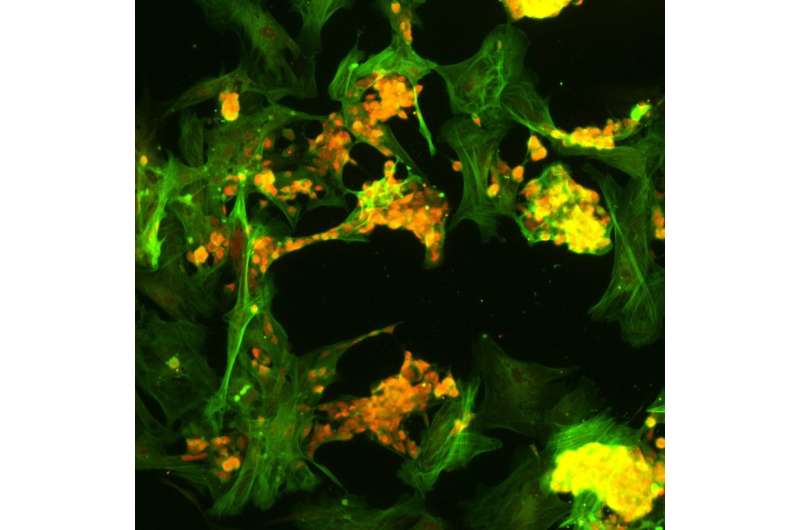Combination therapy may offer better outcomes for patients with retinoblastoma

Researchers at The Saban Research Institute of Children's Hospital Los Angeles (CHLA) have demonstrated that targeting survivin—a protein that inhibits apoptosis or cell death—enhances the effectiveness of chemotherapy in cells and mouse models of retinoblastoma (Rb), the most common malignant tumor of the eye in children.
The study—led by Charles Gomer, PhD, of the Children's Center for Cancer and Blood Diseases at CHLA and Jonathan Kim, MD, director of the retinoblastoma program at The Vision Center at CHLA - demonstrates for the first time that the combination of a survivin inhibitor called YM155 and chemotherapy provides a therapeutic advantage for Rb cells and tumors. The results were recently published online in PLOS One.
While treatments for retinoblastoma vary depending on size and location of the lesions, most therapy includes chemotherapy agents such as carboplatin and topotecan. The CHLA researchers examined whether such agents induced a pro-survival phenotype associated with increased expression of survivin in Rb cells and Rb tumors growing in mouse models.
They found that exposure to chemotherapy resulted in elevated levels of survivin in two human Rb cell lines, but not in normal ocular retinal pigmented epithelial (RPE) cells. They also documented that cellular levels of survivin were significantly decreased in Rb cells, but not in RPE cells, when exposed to YM155. The combination of YM155 and chemotherapy agents was also most effective in enhancing Rb cell death when compared to either alone.
The investigators next evaluated the combined modality approach using Rb tumors growing in mouse eyes. Their study demonstrated the same positive results using YM155 combined with carboplatin, increasing long term Rb tumor responsiveness when compared to single agents.
"Our study shows proof of concept, that we can enhance chemotherapeutic approaches to retinoblastoma while using the same dosage," said Gomer, who is also a professor in the Departments of Pediatrics and Radiation Oncology at Keck School of Medicine of the University of Southern California. "We're hopeful that following additional preclinical studies that this combination therapy will offer better outcomes to children with retinoblastoma and perhaps the possibility of reduced chemotherapy, reducing long-term adverse effects."

















